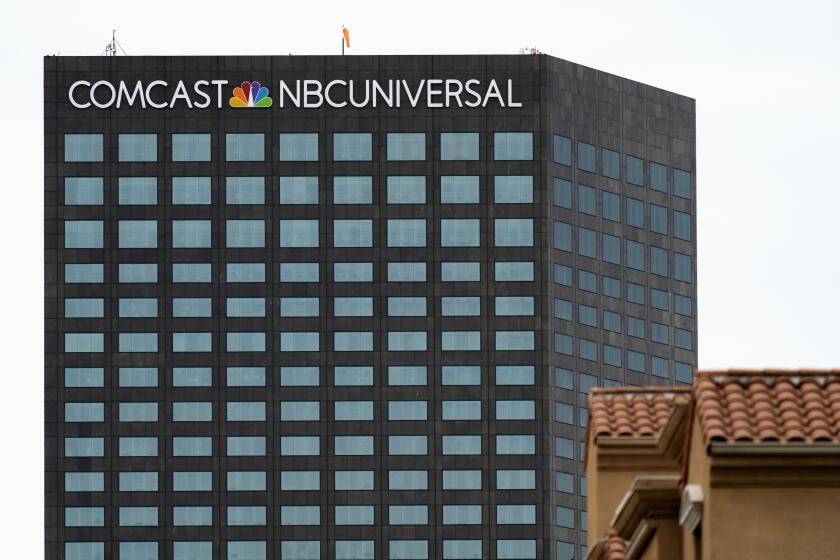Donors affect charity’s mission
Donations to United Way of Greater Los Angeles feed the hungry and shelter the homeless, but they also pad the bottom line of the city’s premier opera, major museums and the exclusive Harvard-Westlake School.
That’s just fine with a large number of United Way contributors, because they’re the folks setting many of the spending priorities.
Now, however, the Los Angeles group and other local affiliates of United Way of America have found that the choices made by donors are leaving one of the $4-billion charity’s fundamental missions -- to help meet basic human needs -- with a smaller piece of the pie.
In recent years, United Way benefactors nationwide have been directing about 25% of their gifts to their favorite causes, instead of allowing the organization to distribute the money to its roster of service providers, such as Catholic Charities and the Salvation Army, officials say. That percentage has generally climbed since the early 1990s.
In Los Angeles, about two-thirds of the $47 million that United Way gave away last fiscal year went to nonprofits selected by contributors, one of the highest ratios in the country. Most of the donor-designated cash ends up in the arts and education, mainly with big institutions that do not specialize in aiding the poor or target problems such as low school graduation rates.
Among the top 10 recipients of earmarked donations last year were the Autry National Center, parent of the Museum of the American West; the Los Angeles Opera; the county Museum of Art; and Harvard-Westlake, a college preparatory school that charges $23,850 in annual tuition.
In previous years, Disney Hall and UCLA also made the list.
“Disney Hall is great, but we need to care about the people who live in the shadows of the buildings down the street from it,” said L.A. United Way President Elise Buik. “It’s not good for any of us if we have too many people living here in poverty.”
But philanthropy experts said that it would not be easy to persuade givers to devote less of their money to concert arenas and alma maters and more to skid row medical clinics and after-school programs for the disadvantaged.
Donors have come to prize the alternatives United Way has granted them, especially on the West Coast, where they tend to be more freethinking about what their contributions should fund, experts said.
“They’re working in a tough area,” Eugene Tempel, director of Indiana University’s Center on Philanthropy, said of United Way affiliates. Some donors, he said, might close their checkbooks if pressed too hard to change their giving habits.
Nora Silver, who heads a nonprofit management program at UC Berkeley’s Haas School of Business, agreed. “You can’t tell people what to do with their money,” she said.
Silver said that United Ways already are losing market share to foundations, charitable funds established by investment firms and nonprofits that solicit over the Internet.
“United Ways are getting crunched,” she said.
Not true, said United Way of America President Brian Gallagher, who added that the $4 billion in revenues last fiscal year was an all-time high.
“Sure, there’s competition, but the competition is not slamming us,” he said.
Buik said her goal would be to gradually achieve a 50-50 split between designated gifts and contributions to L.A. United Way’s community funds.
To keep from alienating donors, she said, the organization will urge them to give twice -- once to their pet nonprofit and again to United Way’s service providers.
The L.A. United Way also intends to burnish its appeal by imposing performance standards on agencies it supports. The ones that fall short could lose funding, Buik said.
“We need to be much more clear about what we stand for,” she said. “It’s good old-fashioned fund-raising.”
Fund-raising got tougher after the reign of United Way of America President William Aramony, who resigned in 1992 amid charges that he diverted funds to finance a lavish lifestyle for himself and his girlfriends. He was later convicted on fraud, tax and conspiracy charges.
Designated donations date at least to the 1980s but increased in the years after the Aramony scandal. Gallagher, however, said he believed that the controversy had nothing to do with the trend, which he attributed in part to the “proliferation of nonprofits” that vie for contributions.
L.A. United Way permits donors to dispatch their gifts to any nonprofit that is classified as a “public charity,” a category that encompasses everything from food banks to the Ivy League.
A similar policy at the Seattle-area United Way saw $57 million of its $100 million in donations last fiscal year forwarded to designated nonprofits, including the symphony and opera.
“We’re not trying to encourage people to stop designating their gifts,” said Jared Erlandson, a spokesman for United Way of King County, Wash., which enjoys hefty contributions from Microsoft and Boeing. “We think any philanthropy is good philanthropy.”
Other United Ways offer a narrower range of choices, and they have retained a bigger share of donations for their agencies, said Mary Kay Leonard, a United Way of America vice president.
“That number should grow every year,” Leonard said.
But Harvard-Westlake President Thomas Hudnut said that United Way earns money from fees and interest on gifts funneled through the charity to the two-campus school.
United Way receives a 9% administrative fee on most donations.
If designated contributions were discouraged, Hudnut said, donors would probably give directly to Harvard-Westlake, and United Way “would lose a lot of potential income for themselves.”
More to Read
The biggest entertainment stories
Get our big stories about Hollywood, film, television, music, arts, culture and more right in your inbox as soon as they publish.
You may occasionally receive promotional content from the Los Angeles Times.











